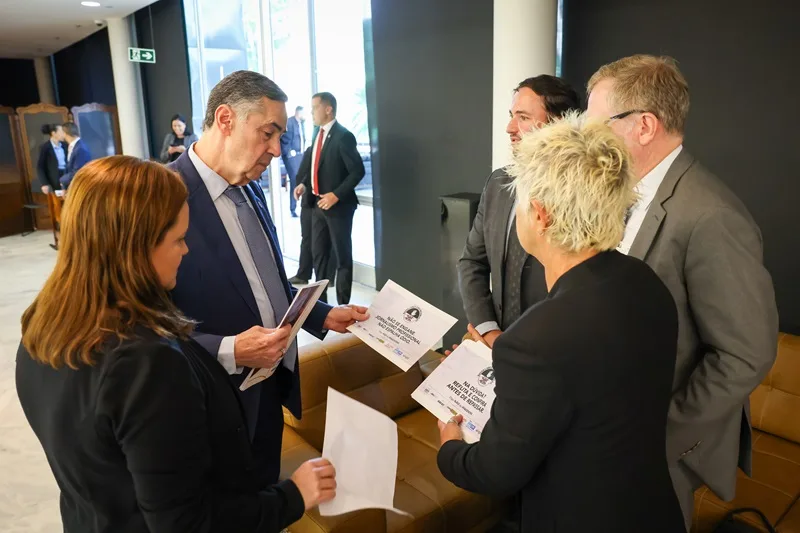6 etapas para conectar departamentos em uma organização de mídia
INMA – 09/03/2021
O mais importante nesse planejamento é promover uma conexão mais profunda que deve ser feita entre os diferentes departamentos (horizontal) e entre as diferentes camadas da empresa (vertical).
Leia abaixo o artigo na íntegra.
6 steps for connecting departments in a media organisation
Matthijs van de Peppel
Director of Marketing, Data, and Service
NRC Media
Amsterdam, The Netherlands
Xavier van Leeuwe
Director of Consumers
Mediahuis Nederland
Amsterdam, The Netherlands
In our most recent blog post, we described the power of a culture of connection. We pointed out that organisations focused on the needs of others are arguably more successful than those that do so to a much lesser extent.
But how do you create such a culture? This can be very tough, especially at publishers where the wall between editorial and commercial departments has been cultivated over centuries. At De Telegraaf and NRC, we did not start as a “firm of endearment” as described in our last blog post. We were far from perfect, to the point of being torn apart by uncertainty predominantly with conflicts between departments. That’s why we started small.
Connecting employees across the company with shared goals can begin to break down existing silos.
Connecting employees across the company with shared goals can begin to break down existing silos.
Based on our experiences, we want to unfold a practical and concrete step-by-step plan you can follow to make changes within a small group of people that can grow into the cultural development of the entire organisation.
The most important thing for building a culture of connection is that a deeper connection must be made between the different departments (horizontal) and between the different layers in the company (vertical). Developing the culture is a long march through the ranks and silos of an organisation.
We have gone through the following steps.
1. Start with the intrinsically motivated.
Change is difficult and sometimes downright threatening for people. Therefore, the first step is to start with a select group of people who get energy from exploring unknown territory. Their exact specialisations do not matter, as long as they have different backgrounds combined with a lot of knowledge in their specific fields. They don’t have to be managers, although they can help pave the way in the organisation because they have a role of leading by example.
It is essential that they are strongly motivated to make improvements, willing to face hard facts, and able to challenge the status quo. This group must be able to let go of their own departments’ interests and look beyond silos. You’re not looking for yes men nor are you necessarily looking for people with whom you get along well. You are looking for sharp thinkers who enter into debate without wanting to be proven right. They don’t want to be right at all; they want to improve the company.
Entrepreneur and innovator Peter Hinssen calls this the disruption committee, and Jim Collins talks about the council. We call this group the coalition of the willing because it is all about the will to change. If you find the right people, the right plan will follow later.
2. Formulate a common goal that motivates everyone.
In this step you formulate a goal that is supported by the group. For example, you describe what you want to do for customers, what your relationship with them looks like, and how to connect with the organisation’s mission. The common goal is more concrete than the organisation’s mission, but it rises above the goal of your own department because it must have a wider appeal.
We formulated the goal of developing as many profitable long-term relationships with subscribers as possible, to whom we offer an optimal customer experience. Nobody could be against this goal, but it did mean we would take a radically different path. The marketing approach at the time was focused on the short term by selling trial subscriptions. We mainly looked at sales figures and not at what happened to these subscribers afterward. We didn’t look at whether they used their subscription and what they thought of NRC, nor whether they remained customers, and not what they delivered. The new common goal opened the way to stop this.
3. Ensure support from management.
Although directors do not need to have a place in the coalition of the willing, it is necessary to have support from the top of the company. Based on the formulated mission, you will generate ideas, make choices, set priorities, do experiments, and measure your success in a different way. In short, you will take a different course and probably make mistakes, which will provoke resistance. At that moment you will need support from the management.
4. Show tangible results to colleagues.
Once we did some small experiments, we were able to celebrate some successes. For example, to improve the customer experience, we started by calling new subscribers and asking them if they were able to log in, the newspaper was delivered well, and NRC was well liked. This led to a 4% improvement in retention.
Such experiments worked like a magnet on colleagues: Something exciting and new happens, and successes are achieved. We used this to go on an internal roadshow. This tour of the departments can vary from joining the formal management team meeting to sharing a success story over lunch.
Sharing a weekly report with a lot of different people and stakeholders is also a concrete way of connecting large groups of people on a weekly basis around innovations. The change spreads like an oil slick. The transparent sharing of concrete information is essential for this. A journalist who, for a long time, did not believe in change because he had heard woolly language from boards of directors for years, pointed to a TV screen with sales figures and summarised it aptly: “I’ve heard talk about the future 20 times, but now I can see it happening. Now, before my own eyes, new subscriptions are coming in every hour.”
5. Visit clients in multi-disciplinary teams.
To strengthen internal connections, you can visit customers in mixed teams: the CEO with a customer service employee, a journalist with an advertising sales person, an administrator with a company lawyer. When we meet people from other groups in a positive way, tribalism fades into the background, according to research by psychologist Gordon Allport.
Customer visits are a fertile ground for cooperation between different groups of colleagues because the contact takes place in a positive, open, and non-hierarchical context. After all, the client is the expert, not the one with the highest rank. Colleagues go out together to get to know the client better, for example by conducting interviews.
It is motivating to build insights together. Social cohesion is taken to a higher level. While people travel to customers together in the car or work out an interview together afterward, they not only get to know the customers but also each other better. There are other, more accessible methods, such as exchanging employees between departments, as Google simulates. We have experienced that connecting with the customer as a focal point works powerfully because the customer is important to everyone in the company.
6. Scale up with customer-focused projects and training courses.
Once the first connections are made, the next step can be taken to really scale up from the early adopters to the majority of the organisation. Defining a list of improvements, which then lead to projects with multi-disciplinary teams, can be a good way for many employees to get to know each other and realise solutions for clients.
To involve many employees and further intensify contacts, we introduced a wide scale of courses, given in groups with colleagues from different departments. Not only does this make the work better structured and focused, more bridges are built between departments and between different hierarchical layers. The classic organogram of silos next to each other and hierarchical layers above them is replaced by a network of people working from different disciplines on improvements for clients.
This step-by-step plan can be a powerful tool for cultural development. The customer is the focal point and connects employees from different departments.


